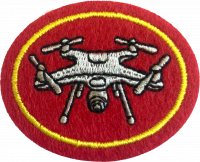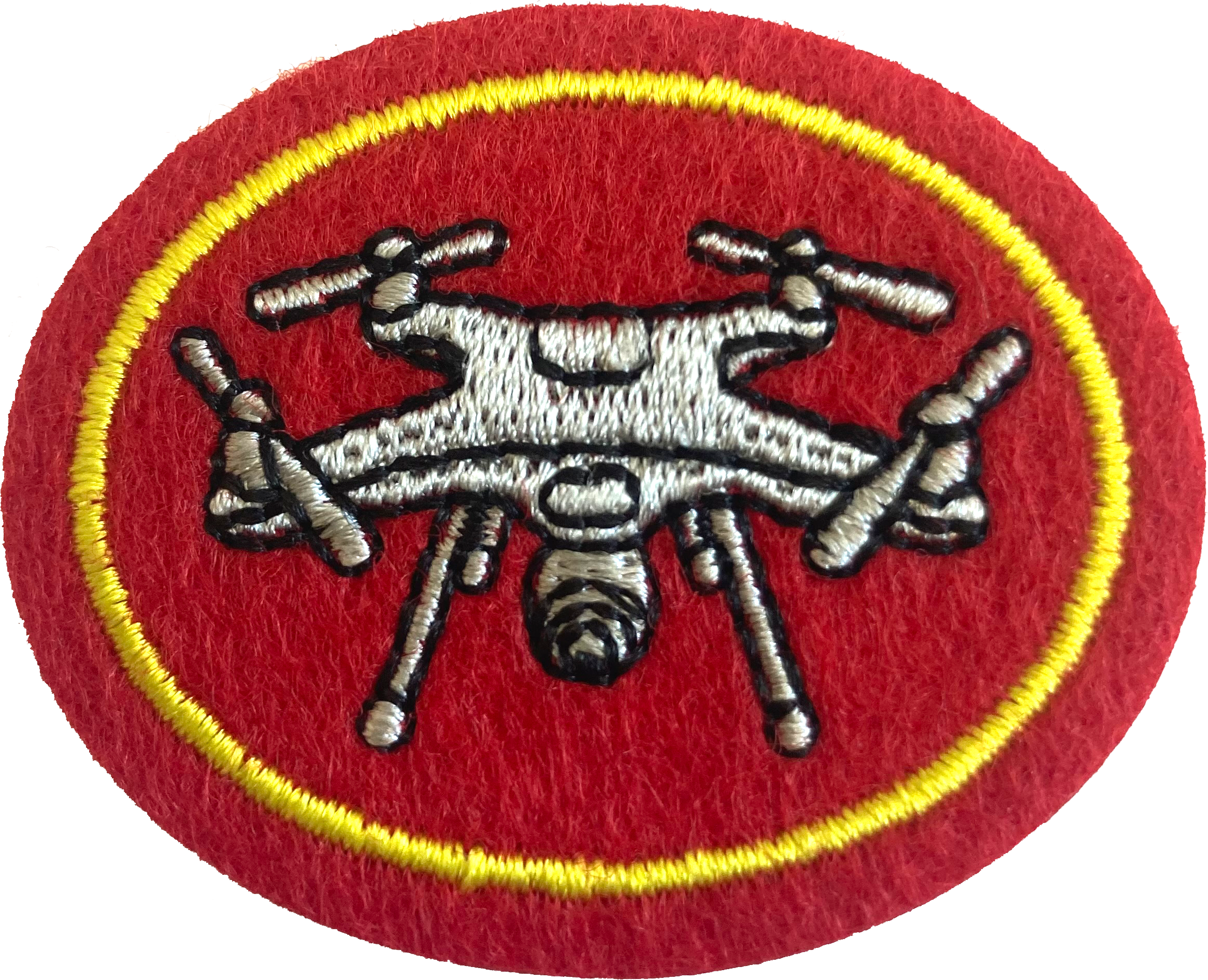Difference between revisions of "AY Honors/Drones/Answer Key/es"
From Pathfinder Wiki
(Created page with "{{clear}}") |
|||
| (7 intermediate revisions by the same user not shown) | |||
| Line 10: | Line 10: | ||
{{clear}} | {{clear}} | ||
| − | + | {{clear}} | |
| − | |||
| − | |||
{{clear}} | {{clear}} | ||
| Line 151: | Line 149: | ||
{{ansreq|page={{#titleparts:{{PAGENAME}}|2|1}}|num=6c}} | {{ansreq|page={{#titleparts:{{PAGENAME}}|2|1}}|num=6c}} | ||
| − | <noinclude> | + | <noinclude></noinclude> |
| − | </noinclude> | + | <!-- c. Disponibilidad de repuestos --> |
| − | <!-- c. | ||
| − | |||
| − | |||
<noinclude></noinclude> | <noinclude></noinclude> | ||
| Line 173: | Line 168: | ||
{{clear}} | {{clear}} | ||
| − | + | <noinclude></noinclude> | |
| − | <noinclude | ||
| − | |||
{{CloseReq}} <!-- 6e --> | {{CloseReq}} <!-- 6e --> | ||
{{CloseReq}} <!-- 6 --> | {{CloseReq}} <!-- 6 --> | ||
| Line 183: | Line 176: | ||
<!-- 7. Encontrar fotos y vídeos de drones en seis aplicaciones comerciales (no militares) que le ayudarán a descubrir interesantes ejemplos de tecnología de drones, posibles oportunidades de servicio y carreras profesionales en el sector de los drones. --> | <!-- 7. Encontrar fotos y vídeos de drones en seis aplicaciones comerciales (no militares) que le ayudarán a descubrir interesantes ejemplos de tecnología de drones, posibles oportunidades de servicio y carreras profesionales en el sector de los drones. --> | ||
| − | + | {{clear}} | |
<noinclude></noinclude> | <noinclude></noinclude> | ||
| Line 212: | Line 205: | ||
{{clear}}</noinclude> | {{clear}}</noinclude> | ||
{{ansreq|page={{#titleparts:{{PAGENAME}}|2|1}}|num=10a}} | {{ansreq|page={{#titleparts:{{PAGENAME}}|2|1}}|num=10a}} | ||
| − | <noinclude> | + | <noinclude></noinclude> |
| − | </noinclude> | + | <!-- a. Despegue y aterrizaje --> |
| − | <!-- a. | ||
| − | |||
| − | |||
| − | |||
| − | |||
| − | |||
| − | |||
| − | |||
| − | + | {{clear}} | |
| − | |||
| − | |||
<noinclude></noinclude> | <noinclude></noinclude> | ||
| Line 231: | Line 214: | ||
{{ansreq|page={{#titleparts:{{PAGENAME}}|2|1}}|num=10b}} | {{ansreq|page={{#titleparts:{{PAGENAME}}|2|1}}|num=10b}} | ||
| − | <noinclude> | + | <noinclude></noinclude> |
| − | </noinclude> | + | <!-- b. Vuelo hacia delante y hacia atrás --> |
| − | <!-- b. | ||
| − | |||
| − | |||
| − | |||
| − | |||
| − | |||
| − | |||
| − | |||
| − | |||
| − | + | {{clear}} | |
| − | |||
| − | |||
| − | + | <noinclude></noinclude> | |
| − | <noinclude | ||
| − | |||
{{CloseReq}} <!-- 10b --> | {{CloseReq}} <!-- 10b --> | ||
| Line 256: | Line 226: | ||
<!-- c. Vuelo a izquierda y derecha --> | <!-- c. Vuelo a izquierda y derecha --> | ||
| − | + | {{clear}} | |
| − | |||
| − | |||
<noinclude></noinclude> | <noinclude></noinclude> | ||
| Line 276: | Line 244: | ||
==Referencias== | ==Referencias== | ||
| − | + | <noinclude></noinclude> | |
| − | <noinclude | ||
| − | |||
{{CloseHonorPage}} | {{CloseHonorPage}} | ||
Latest revision as of 21:43, 13 February 2023
1
Descubrir y describir una breve historia de los drones y el vuelo no tripulado.
2
Identificar los siguientes componentes de un dron y describir cómo funcionan juntos para que un dron vuele:
2a
Hélices y motores
2b
Controlador electrónico de velocidad (ESC)
2c
Controlador de vuelo
2d
Sistema de Posicionamiento Global (GPS)
2e
Batería
2f
Receptor y transmisor de control remoto (RC)
2g
Cámara
3
Aprender al menos diez procedimientos básicos de seguridad para operadores de drones recreativos. Identificar cuáles de estas normas se deben a leyes o reglamentos de su estado/provincia/territorio.
4
Revisar las normas y reglamentos vigentes para pilotos de drones recreativos en su área local (como la FAA o la TCAA).
5
Aprender a aprobar la certificación obligatoria TRUST de la FAA o TCAA (o su equivalente) para pilotos de drones recreativos.
6
Explicar por qué es importante tener en cuenta los siguientes aspectos al seleccionar un dron para uso recreativo:
6a
Tiempo de vuelo/duración de la batería
6b
Cámara
6c
Disponibilidad de repuestos
6d
Sistema de Posicionamiento Global (GPS)
6e
Comprar del lugar adecuado
7
Encontrar fotos y vídeos de drones en seis aplicaciones comerciales (no militares) que le ayudarán a descubrir interesantes ejemplos de tecnología de drones, posibles oportunidades de servicio y carreras profesionales en el sector de los drones.
8
Leer Isaías 55:9-11, donde Dios dice que sus caminos son más altos que los nuestros. Discutir cómo el hecho de que Dios vea las cosas a un nivel superior beneficia a las personas. ¿Cómo beneficia esta perspectiva diferente a un operador de drones?
9
Utilizando imágenes aéreas de drones, como individuo o club, cree una película para su uso en la evangelización u otros fines ministeriales. Asegúrese de seguir todos los requisitos legales en el uso de las imágenes de drones.
10
Después de obtener su certificación, realice las siguientes maniobras básicas con un dron:
10a
Despegue y aterrizaje
10b
Vuelo hacia delante y hacia atrás
10c
Vuelo a izquierda y derecha
10d
Rotación de 360 grados


